The English artist and Beirut resident Tom Young campaigns for the preservation of some of the grand Levantine houses of the city. He combines his painting practice with architectural activism- transforming disused heritage buildings into living centres of creativity and education. His most notable projects in Lebanon include Villa Paradiso (2013-17), The Rose House (2014-15) and Beit Boustani (2016-17). He is planning to transform Sofar Grand Hotel and Casino into a cultural venue next year, in collaboration with the Cochrane/Sursock family. The text and gallery below is to highlight some of these fragile buildings and the art that has been inspired from these edifices.
VILLA PARADISO
In the middle of Gemmayzeh is a heritage site that sits amidst the urban building boom that has characterised Beirut's march of progress. The site comes in the form of a traditional Lebanese mansion under renovation ("Villa Paradiso") on a parallel alley above the bustle of main street Gemmayzeh - a mansion mostly built in the mid 19th Century, and early 20th century. As such it is a classic example of hybrid Lebanese/Levantine architecture- combining elements of Ottoman and French Art Nouveau design.
The house was inhabited by a wealthy Armenian Lebanese trading family who fled the Armenian genocide in 1915 and settled in Beirut. They left the mansion shortly after the beginning of the Lebanese war in 1975.
As chance would have it, British artist Tom Young saw the mansion in the wee morning hours of New Year’s day, 2013. This fateful moment was the genesis of a project that would span 6 months, culminating with a self-curated on-site exhibition by Young called ‘Carousel’ at Villa Paradiso – which took place on Thursday, May 30th, 2013.
Young’s intervention and idea to use the house as an artistic venue encouraged the new owners of the house - the Feghali family - to renovate the house at a faster pace.
At the heart of the exhibition was Young's investigation of memory and longing prompted by his own engagement with the villa and the remnants left by the former owners - the Baloumian family. ‘Carousel’ was the name of the shop owned by the family in Beirut in the 1960's. Young chose the title to honour this, and as a symbol of childhood memories and celebration despite adverse circumstances.
Young discovered that many of the Baloumian family had resettled in New York and Baltimore. He held an exhibition at ‘Alwan for the Arts’ in New York City in 2016, where he met the family, returning family belongings, and portraits he had painted of them from discarded passports found in the house.
Having helped to renovate and mount the exhibition ‘Carousel’ in Villa Paradiso, in 2013, the mansion became an active cultural centre for 3 years, hosting exhibitions by local and international artists. It has recently been renovated further by Remi Feghali to become the residence of the Ambassador for the European Commission to Lebanon. As such, it continues to host cultural events organised by the EU.
THE ROSE HOUSE
The Rose House (or ‘Pink House’ or ‘La Maison Rose’ as it is often called) is an iconic 19th Century mansion in Ras Beirut, which was transformed into a public venue for the arts by Tom Young for 3 months from November 18th 2014 to January 30th, 2015. I called it ‘The Rose House’ - to mix the French, Arabic and English- because the more romantic connotation of ‘Rose’ (in French, and the colour pink ‘zahr’ in Arabic also means flower) suits the house. I also thought of renaming it so the house wouldn't be confused with a famous film about architectural heritage ownership rights called ‘Around The Pink House’ co-directed by Joana Hadjithomas and Khalil Joreige in 1999- which was about another famous pink coloured house in Beirut which was demolished after the civil war. But after all that, Agence France Presse did confuse it with the film!
The new owner, Hicham Jaroudi has promised to renovate the building, and attend to urgent structural repairs- although work has not started yet. In fact the building is in a much worse state than it was in 2015- with evidence of neglect and vandalism.
The distinctive upper two floors of the house were built in 1882 by Mohammad Ardati on top of a much older vaulted structure- which was his hunting lodge. The upper two floors have arched balconies facing the sea front, which are influenced by Arabic design, whilst the interiors are strongly influenced by Italianate and French Baroque design.
One of Mohammad Ardati’s three sons, Adil Ardati leased the ground and first floor of the house to the El Khazen family from 1965-2014.
The Ardati family, and the closely related Daouk family lived in the house for the first few decades of the 20th Century. During this time, several dignitaries came to stay - such as General De Gaulle.
The Ardati family leased the first floor of the house to several people in the 20th Century, including the British Doctor Arthur Dray (who started the AUB School of Dentistry and was murdered in 1926 in mysterious circumstances) from 1911-20, and the American Cultural Attache Russ Linch and his family from 1959-64.
From 1963-4, the American abstract painter John Ferren lived upstairs. Before coming to Beirut, Ferren was a close friend of Pablo Picasso’s in Paris. He stretched the canvas on which Picasso painted ‘Guernica’.
The artist, interior architect and designer Sami El Khazen lived and worked on the ground floor- transforming it into a world famous interior. Sami’s parents, Sheikh Salim and Sheikha Margot El Khazen lived on the first floor. Sami’s sister Fayza lived with them from 1965-6 before she got married and then went to live in the Mathaf area.
Shortly after the outbreak of the Lebanese Civil War in 1975, Sami and Fayza El Khazen went to live in Paris. Their mother, Margot stayed on living in the house throughout the war, whilst their father Salim El Khazen lived mostly in the family home in Faraya. Margot strengthened the delicate balcony pillars in concrete after the Israelis bombed the house from the sea in 1982.
Sami El Khazen died in Paris in 1988. Fayza came back to Lebanon to live in the house in 1997 to look after her mother, who had become paralysed. During this time, Fayza established the publishing house ‘Terre Du Liban’- operating from the first floor of the house.
The owner Adil Ardati died a few years ago without having any children. The Ardati family lawyer sold the house and surrounding land to the property developer Hicham Jaroudi- who owns the Riyadi Sports Club under the house.
Margot El Khazen died in the house in 2011. After that, Fayza El Khazen was given 2 years to leave.
In April 2014 artist Tom Young knocked on the door, became friends with El Khazen. After she left in October 2014, Young opened the house to the public for the first time in its history for an art exhibition and a series of musical and theatrical events.
Since then, it has remained locked and continues to deteriorate. Renovations are being planned by Jacques Abou Khaled (the architect responsible for restoring the Musee Sursock in Beirut), but there are legal complications surrounding the permission to renovate because a former owner (Madame Beyhom- who is said to still own up to a sixth of the shares in the property) refuses to sell her percentage to Mr Jaroudi.
Read more about this house in articles by Robert Fisk and L’Orient Le Jour:
BEIRUT ARTS CLUB, MAR MIKHAEL (BEIT BOUSTANI)
In February 2016, he pioneered the establishment of ‘Art House Beirut’ in a derelict 19th Century mansion in Mar Mikhael, Beirut in 2016. It opened for public exhibitions in June 2016. However he objected to the former owner’s secret plan to build a road through the central hall of the house to reach huge towers the owner planned to build in the rear garden, so he left the project.
As of autumn 2017 there is great news: the house was bought by Nabil and Zoe Debs, who wish to restore the house and garden authentically, keeping its integrity and transforming it into their second project in Lebanon under their International Arts Clubs umbrella. They imagine it as a cultural exchange venue and platform for the arts on the ground floor, the upper floors would become an eclectic home away from home guest house/hotel. This will be the second Beirut Arts Club; the original one in Gemmayze has already hosted a few exhibitions. Its hotel component is rumoured to open in 2018.
More history-
Salim Habib El Boustani, a banker, commissioned an Italian architect to design the house in 1873- which explains the ‘Baroquetta’ urban design, the classical Roman style architraves above the windows, the raised ground floor- which enables a closed wall to the street. He lived in the house with his wife Adele (nee Mansour), and their children.
Adele’s father Doctor Habib Mansour was executed by the Ottomans for helping to plot Lebanese Independence.
Adele was a keen pianist, and brought one of the first pianos to Lebanon. The piano remained in the ground floor until the family sold the house in 2003. The piano is now in a cousin’s apartment in Achrafieh.
Salim and Adele’s bedroom was the white room. Their ‘dressing’ room was the adjoining blue room. Their antique Villeroy and Boch washing bowl and jug- which were in the dressing room- still survives and can be exhibited as part of the exhibition.
They had 6 children- 2 sons and 4 daughters.
One of their sons, Victor lived with his wife Alice (nee Bakhos), and their 4 daughters in the house above the garden, which was ruined during he Civil War. It was demolished in controversial circumstances in 2010.
Victor was a pharmacist. His laboratory was in the vaulted cave in the corner of the garden- many of his bottles are still there, and can be used as found objects in the exhibition. He died in 1977.
Their daughter Claude lived in the house from 1951-63. She married Alexi Kabbouche in 1963. They had 3 sons and 2 daughters. They moved to a house Tabaris, where she still lives with her family, sons Victor and Toufic, daughter in law Susan and granddaughters.
In 1976, at the beginning of the civil war, they moved back to the main house and lived on the top floor until 1980. Then they returned to Tabaris.
A 1970/80’s Super 8 film of the Boustani family and descendants was made on the steps of the garden house. The garden house has since been destroyed, but the steps to it are still there.
The Kabbouche family and her sons- returned to live on the ground floor of the house with Claude’s great aunt Georgette and Frank, and their sons Thomas and Joe- because their home in Tabaris was too dangerous to live in.
In 1995, a murder mystery film ‘Glance’ was made by ALBA student Elsa Hage inside the house.
The upper 2 floors of the house were the residence of British Officers in the 1940’s- from where the British fought with the Free French against the Vichy French. During this time, the British conspired with Lebanese Independence movement to force the French out and pronounce Lebanese Independence in 1943. During this time, Salim Boustani’s sister Georgette (Claude Kabbouche’s great aunt) fell in love with a Scottish officer Frank Armour, who was living upstairs in the house. They married. Apart from living in Switzerland and Australia for a year each respectively, they lived the rest of their lives in the ground floor of the house.
They had 2 sons- Thomas and Joe. Frank loved Lebanon. He kept a large collection of songbirds in cages in the garden. They were mostly killed by a bomb in the civil war. Apparently, a few birds survived and flew free after the attack.
Claude Kabbouche tells stories about her grandfather who used to offer food and money to starving Beirutis by the nearby train station during the Ottoman food blockade and famine during World War 1. Architecturally, the ground floor exterior is of a similar style as the French designed train station in Mar Mikhael- which was built a few years after the house.
The Kabbouche family sold both houses to a Kuwaiti in 2003. The upper house was bombed during the Civil War- although much of the house remained intact until it was bought by a Syrian businessman in 2009, and was illegally demolished in 2010.
Then there was a plan for some of the house to be partially renovated, and an idea for a section of it to become an 'Art House' was being discussed. The plan, however included demolition of most of the interior of the house, and two large towers to be built where the remains of the garden are now.
The situation was further complicated by plans for the ‘Fouad Boutros’ motorway to be built- which, if itis built, will carve the neighbourhood in two, destroying the beautiful Tobaji orchard next to the house, and come just 2 meters away from the house.
However, as of autumn 2017, there is good news: there is a new buyer, a Lebanese businessman and art collector Nabil Debs who intends to renovate it as a living family home- preserving its original features and restoring the beautiful garden to its former glory. They have also done an extraordinary job restoring a complex of ruined Ottoman era buildings in Gemmayzeh which they plan to open as ‘Beirut Arts Club’ next year- a boutique hotel/gallery/cultural centre/meeting place for artists and travellers.
Before renovations begin in earnest in 2018, they invited Tom Young back to the house to hold an exhibition to mark the building’s new life- as he had originally intended in 2016. Young has resumed his artist’s residence on the ground floor, where he and fellow artist Noor Haydar gave workshops for disadvantaged children (through UNHCR and Makhzoumi Foundation). The workshops were filmed by the BBC on 4th December as part of their ‘Art Lover’s Guide’ to Beirut, to be broadcast next year.
Young is collaborating with Haydar, photographer Karim Sakr and performance artist Nadine Sures for the exhibition. Young will be exhibiting 30 paintings as a response to the house, its adjoining garden and the rapidly developing city which surrounds it. Haydar is creating site specific sculptural installations on the themes of displacement and self containment. Sakr is producing a series of ‘superimposed’ photographs about the memory of the building’s former residents, whilst Sures will be giving an improvised performance based on archival imagery of events that took place at the house in 1963.
The exhibition opens on 13th December 2017, and continues daily until 19th December 12pm-7pm, with a percentage of proceeds going to the children who have come to the house.
AL ZAHER (SPEARS HOUSE)
The house in the Zarif area of Beirut was built by the Mezher family in 1920. It is a hybrid Levantine design- combining Arabic fixtures and a Lebanese central hall with an elongated Venetian Palazzo plan. It was the family’s private home, then a consulate for Japanese. After the Allied invasion in 1941, it became the British Ambassador’s Residence from 1941-82. The British rented it from Sami Saab- a descendent of Al Mezher. The house’s most notable former resident is General Spears- the British Minister for the Levant (1941-44). The house was a centre of activity during the dramatic events which lead to Lebanese Independence in 1943- for which he played a major role.
Young has since met Lady Felicity Wakefield, the wife of one of the last British Ambassadors to live there- Sir Peter Wakefield from 1975-8. She gave Young an extensive archive of photographs and newspaper articles about notable people who visited the house during that difficult time in Lebanon’s history.
In 1984 Mohammad Barakat bought it, protecting it from being squatted by militias, and then established it firstly as an orphanage for Social Welfare Institution Dar Al Aytam Al Islamiyeh’s deaf and blind children. Since 2002 Dar Al Aytam have maintained it as an administration centre.
In March-April 2017, Young painted from a studio in the building- from where he researched the history of the building and taught the children of Dar Al Aytam. He opened up the mansion ‘Beit El Zaher’ in Zarif, Beirut as a public cultural centre for the first time in its history- from March-April 2017- where an exhibition raised funds for Dar Al Aytam Social Welfare Institutions- the administration office of which is housed in the mansion.
BEIT FAIROUZ
My wife’s cousin Mazen Haidar is a conservation architect, and former head of Architecture and Design at the Academie Libanaise de Beaux Arts (ALBA). He wrote an excellent paper on ‘Beit Fairouz’, the house where the legendary singer grew up and learned to sing. viewable here. I have painted and photographed it a number of times.
SOFAR GRAND HOTEL
Roderick Sursock Cochrane, the son of Lady Yvonne Cochrane, is restoring the Grand Hotel Casino Ain Sofar. The hotel sits on a 28,000 square meter plot in the hills above Beirut on the old road to Damascus. It is valued at $14 million.
Built in the 1890s by Alfred and Ibrahim Sursock, Roderick owns half of the property and five female cousins who are descendants of Ibrahim own the remaining half.
The Grand Hotel is one of the oldest hotels in the country. Owning the first casino license in the country, it became the one if the most glamorous places to stay in the Levant - hosting kings, presidents, prime ministers, film stars and singers from East and West. General Sir Edward Spears had his first meeting with the French General Catroux here after the Allies and Free French had defeated the Vichy French in Lebanon in 1941. It was the first act in a series of events which would lead to Lebanese Independence from France.
The hotel became disused in 1975 at the start of the civil war. It was occupied by Syrian troops, who later looted and burned it as they withdrew. Today it stands derelict.
However, the main structure still stands, and the Cochrane family saved much of the hotel’s furniture and fixtures - by taking them to their Palace in Beirut during the war. They are now stored in what was a legendary nightclub in the hotel basement called ‘The Monkey Club’, where singers such as Asmahan and Fairouz once sang.
Cochrane has finished restoration of the roof at a cost of $100,000, and is currently renovating wooden frame windows and protecting other open windows and doors.
He has invited Tom Young to be the first artist to exhibit in the building. Young plans to make a series of site specific installations, alongside musical and theatrical performances related to the grand history of the place, due to open in September 2018. He also aims to link the hotel to the adjoining train station, which has also been ruined since the civil war.
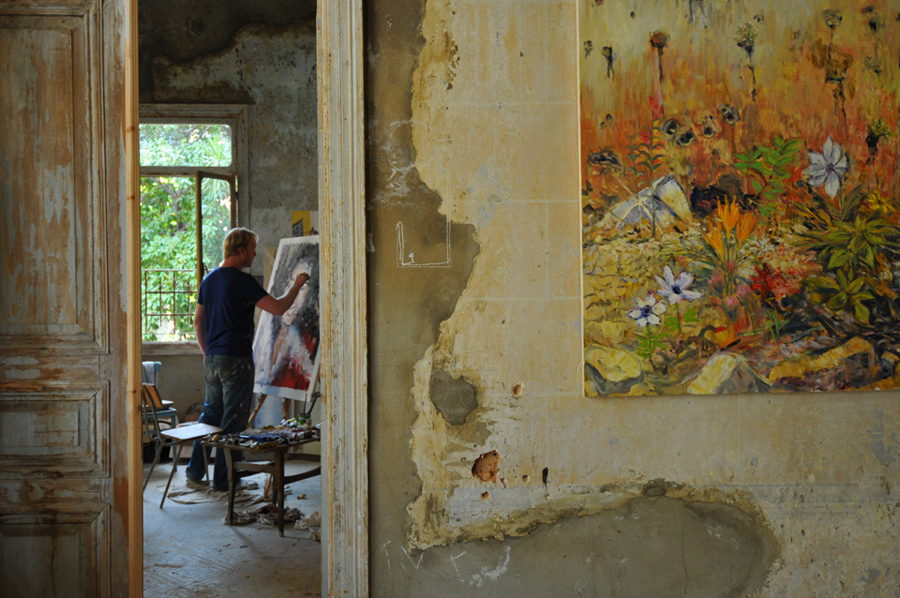
Tom Young at Villa Paradiso (photo be Elsie Haddad)

Villa Paradiso, revival hall
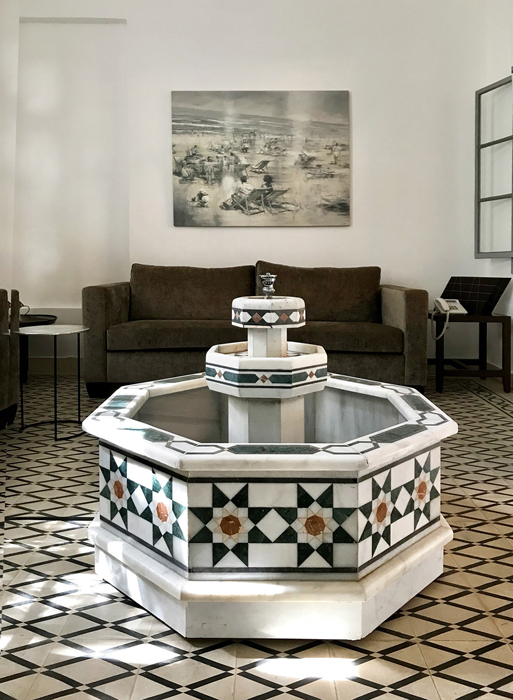
Villa Paradiso, revival fountain
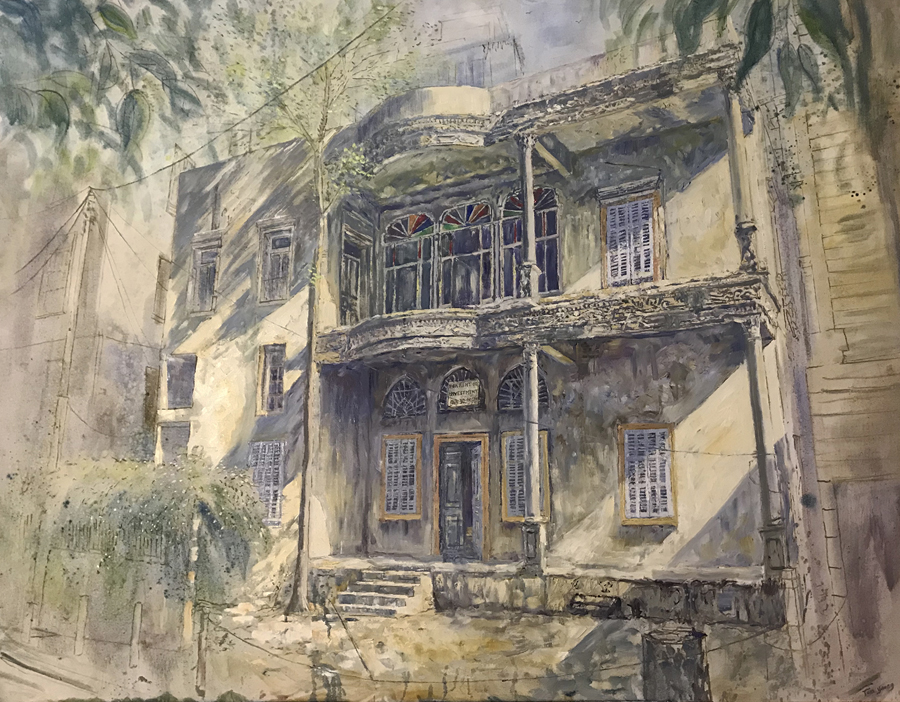
Villa ‘Yasmine’ (Paradiso)
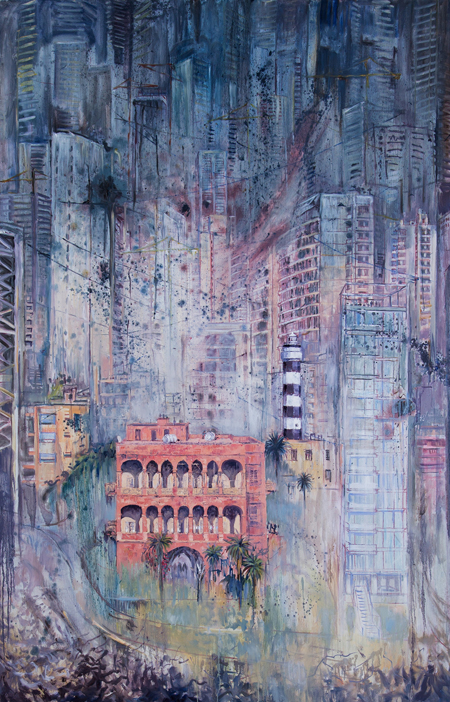
Rose of the city, painting by Tom Young

Family return
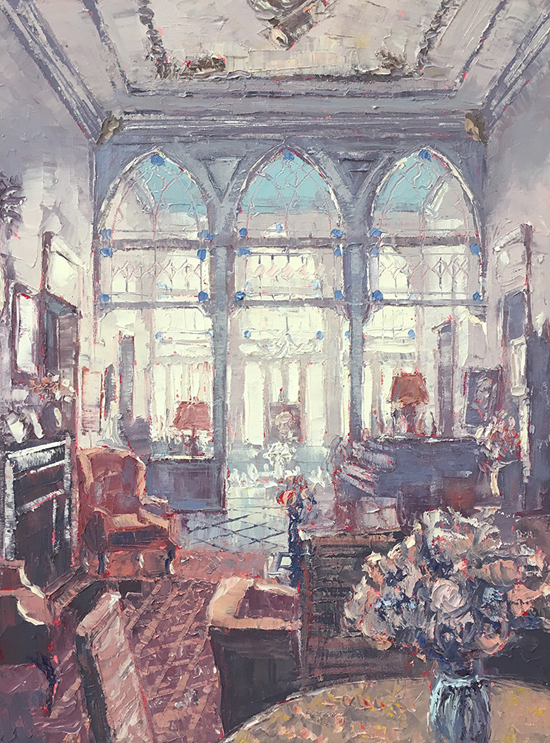
Rose interior north.
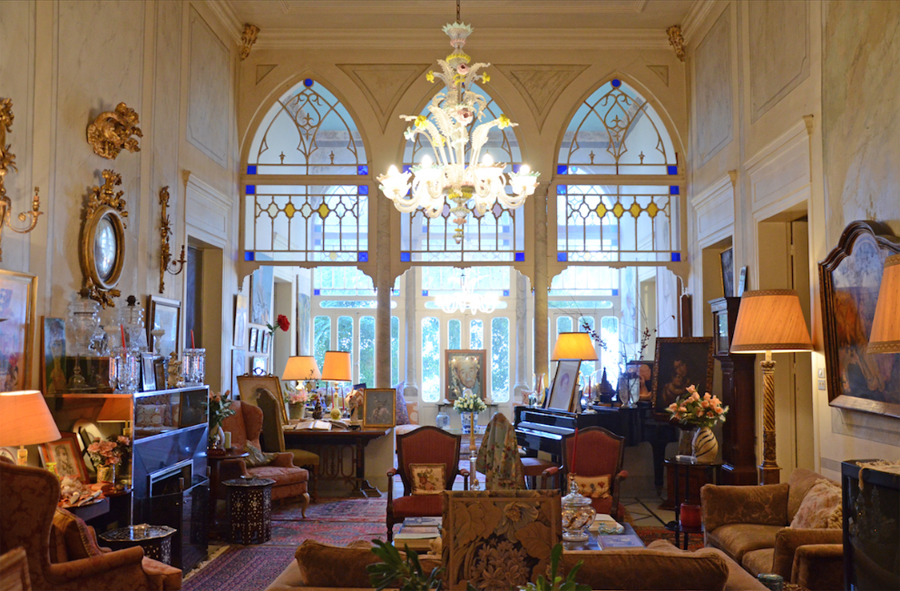
The Rose House as it was in Fayza El Khazen’s time
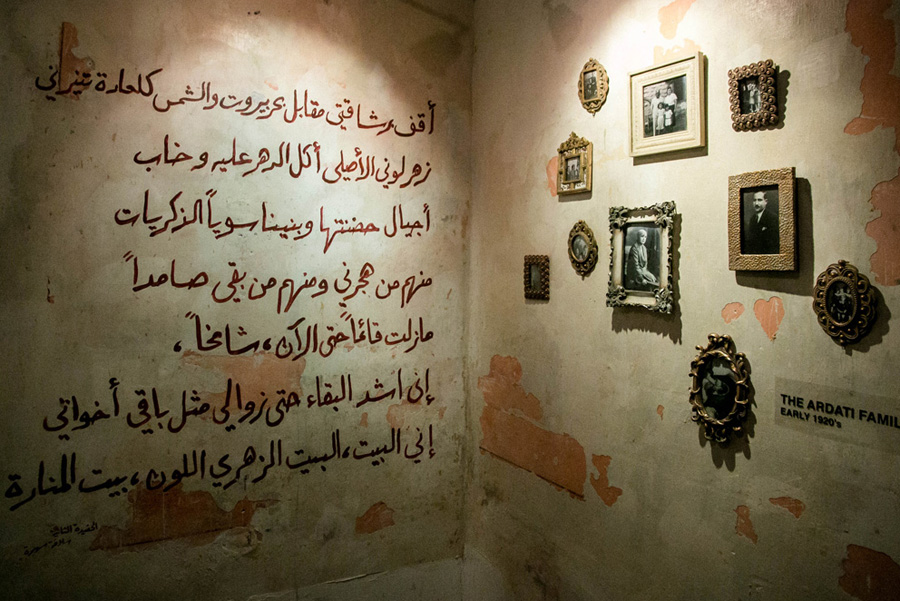
The poem written by Soulafa Soubra on a wall of the Rose House during my exhibition there. Soubra is an artist/designer, and great granddaughter of Mohammad Ardati- the man who built the Rose House in 1882. Part of the installation are photos of Soubra’s grandparents in the house and next door house ‘The White House’ in the early 20th Century. - The translation of the poem: Standing tall opposite the Beirut waters, the sun’s daily rays face me
Pink, my novel tint, time consuming, fading it
Generations; I have nursed, raised, together built memories
Some departed, some remained resilient
I stand strong till today; Towering
I draw my brothers, sisters till the end of time, as all of my siblings
I am The House
The Pink House
The Light House.

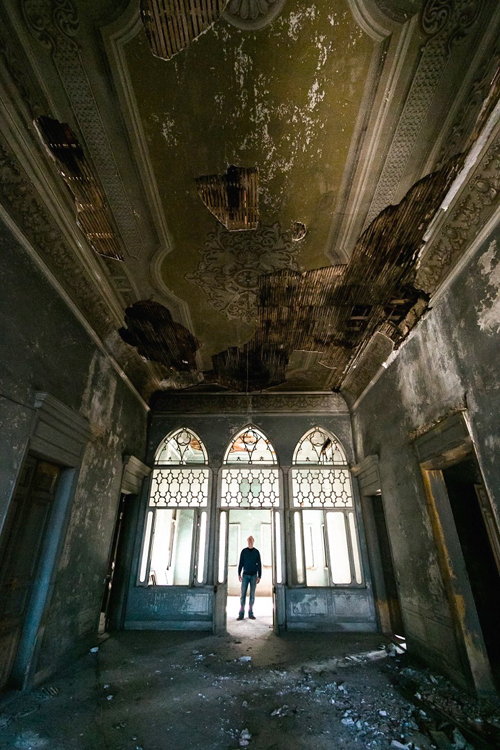
Beit Boustani (photo by Karim Sakr)
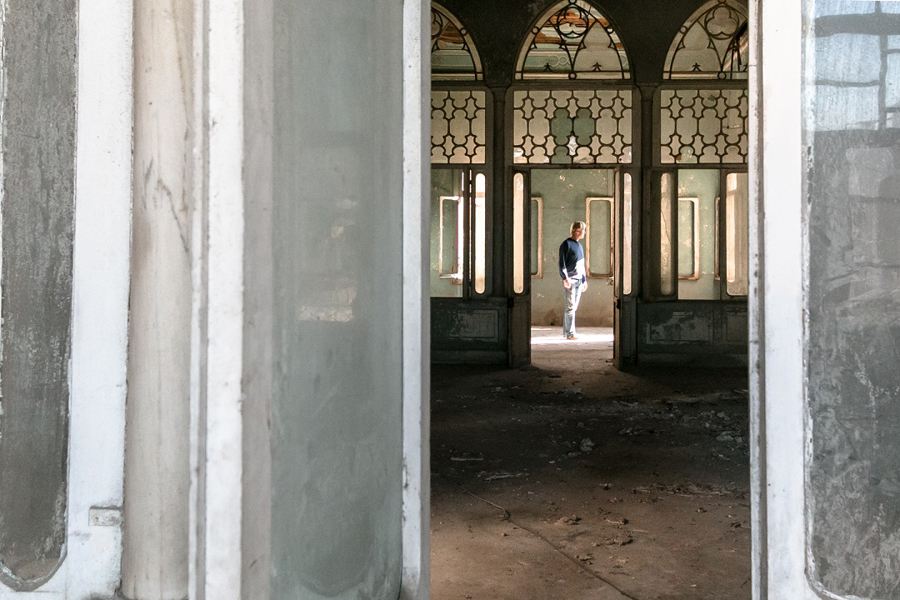
Beit Boustani upper (photo by Karim Sakr)
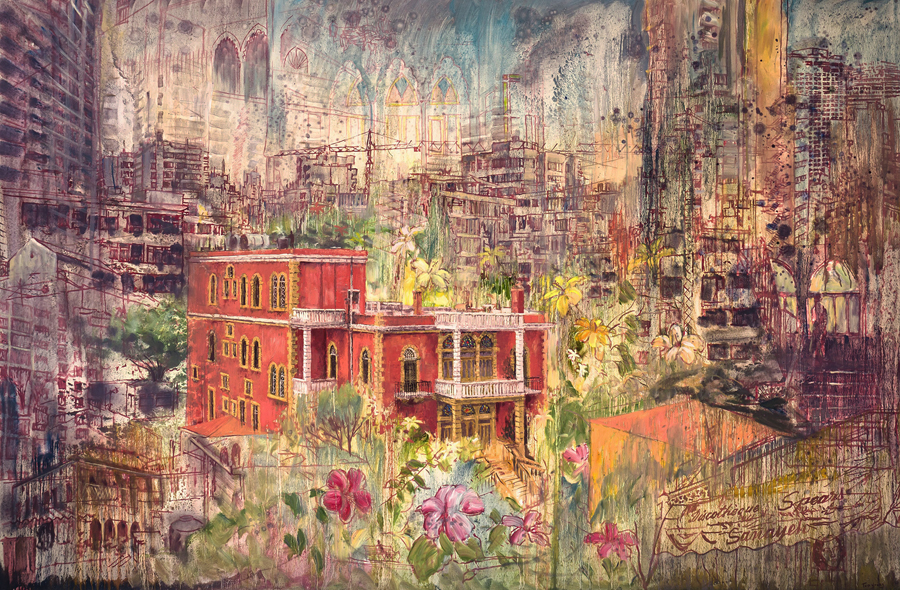
Al Zaher the mansion - ‘survival’.

Al Zaher the mansion where General Spears lived when he helped Lebanon become independent - portraits (photo by Karim Sakr)
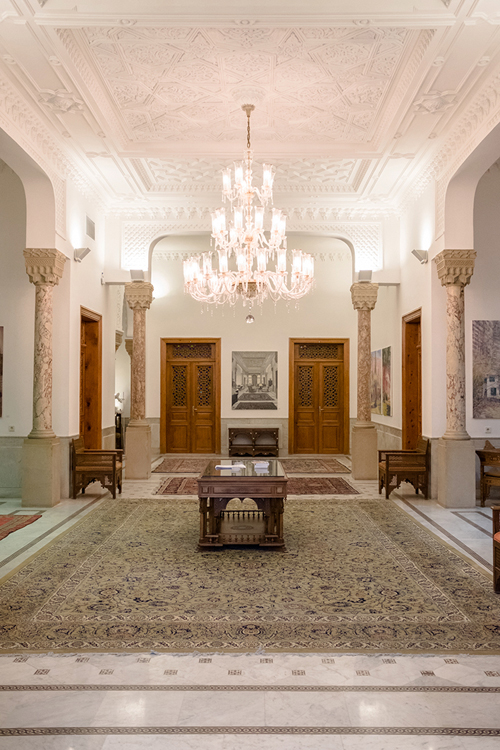
Al Zaher mansion - the exhibition hall (photo by Karim Sakr)

Al Zaher mansion - the exhibition hall (photo by Karim Sakr)
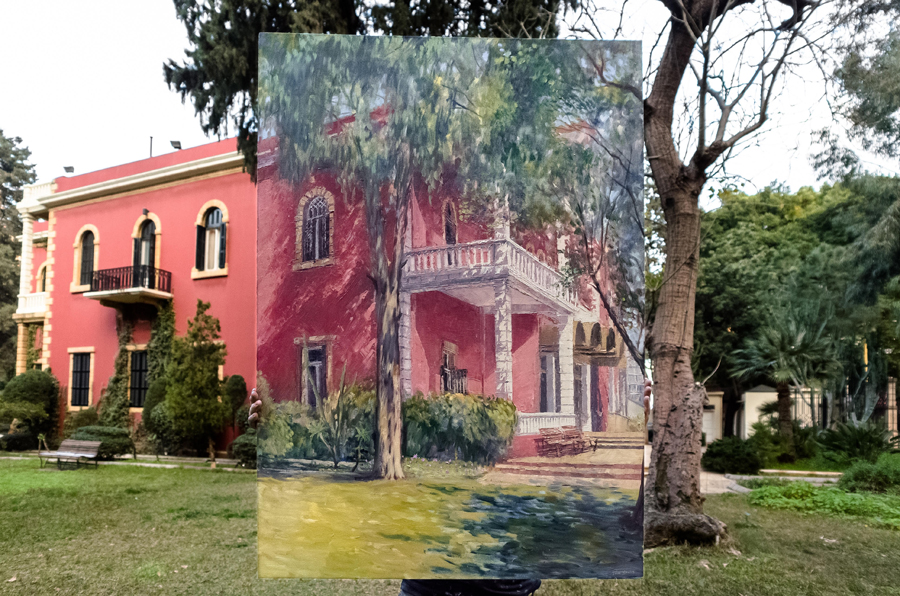
Al Zaher garden (photo by Karim Sakr)
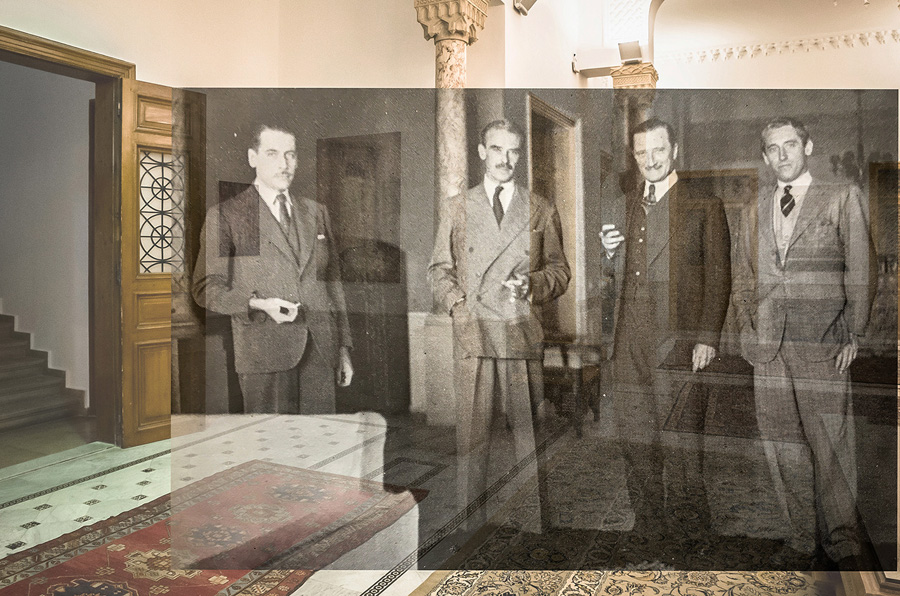
A ‘double exposure’ image in collaboration with photographer Karim Sakr - General Spears and his colleagues in the central hall of ‘Al Zaher’: left to right, Dan Lascelles (First Secretary in Foreign Office), Mr R G Casey (British Minister to the Middle East), Major General Sir Edward Spears (British Minister to the Levant), Henry Hopkinson, private secretary to the Permanent Under-Secretary of State for Foreign Affairs, Sir Alexander Cadogan.

Beit Fairouz (through the trees)

Sofar Grand Hotel
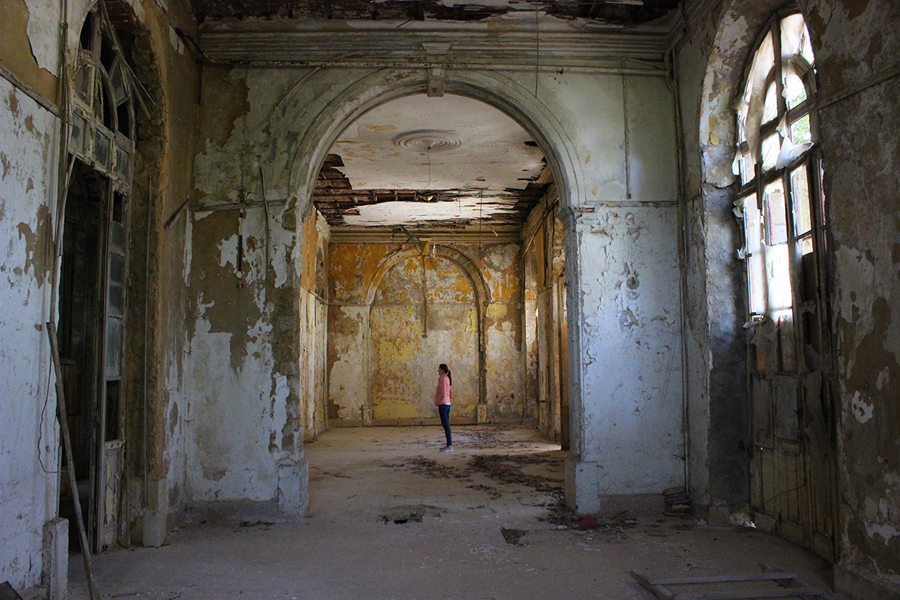
Mary Cochrane, wife of Roderick Sursock Cochrane, in the former hotel restaurant.
